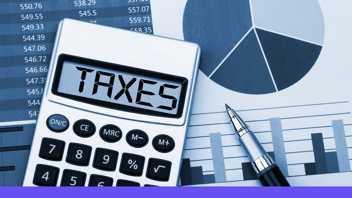What is Cost of Goods Sold (COGS)? Definition, Formula & Examples
What is Cost of Goods Sold (COGS)?
Cost of goods sold, known as COGS for short, are the wholesale expenses associated with producing and delivering goods or services to a business before it adds its margin and creates sales revenue. It’s the sum of all direct costs associated with making a product, both producing and delivering it, classified into variable and fixed costs.
Variable COGS fluctuate based on sales volume, while fixed COGS remain constant. Understanding COGS is crucial for assessing profitability and managing expenses.
IN THIS ARTICLE:
→ Cost of Goods Sold: Executive Summary
→ COGS Explained Simply
→ What are Variable COGS?
→ Variable COGS Examples (Construction, Manufacturing & Subcontracting Businesses)
→ What are Fixed Costs of Goods Sold?
→ Fixed COGS Examples (Wholesale, Manufacturing & Service Businesses)
→ Where COGS Appear in Your Financial Reporting
→ The Expert Tip to Tell Your Accountant About Reporting COGS
→ How to Calculate COGS
Cost of Goods Sold: Executive Summary
-
Cost of goods sold (COGS) is the sum of all direct costs associated with making a product – both producing and delivering it – which are classified into variable and fixed costs.
-
COGS represent all the wholesale expenses associated with producing and delivering goods or services to a business before it adds its margin and creates sales revenue. These expenses the sum of all direct costs associated with making a product, both producing and delivering it, classified into variable and fixed costs. Understanding COGS helps in determining the expenses directly linked to producing or delivering goods, which is crucial for calculating profitability and making informed business decisions.
-
Benchmarking COGS involves evaluating both variable and fixed costs relative to revenue. Strive to optimise variable costs to improve profit margins while ensuring fixed costs are managed efficiently to maintain financial stability.
-
To influence COGS, businesses can negotiate better pricing with suppliers, optimise their production processes, and invest in cost-effective technologies. Monitoring expenses regularly and adjusting strategies accordingly can help in managing COGS effectively.
Cost of Goods Sold Explained Simply

Jump to video (above) here
Cost of goods sold (COGS) are the expenses that are inputs into either producing the product you sell or delivering the product or service you sell, whether that is tangible or intangible.
They can then be broken down into variable and fixed costs of goods sold.
‘Variable’ means they move up or down depending on how much or how little you sell.
What are Variable COGS?
To explain variable COGS, I'll use the basic example of Sharpie textas. What would the variable expenses if you were a distributor of these?
- If you sell a thousand of them, the cost of the Sharpie itself x 1000 is the variable COGS.
- To get the Sharpies into your possession, transportation expenses – think shipping fees, freight charges and customs duties – are another variable COGS.
- Then, to get the product to a client, the delivery cost is a variable COGS as well.
So if you sell 1000 Sharpies, that is your cost. If you sell 100,000 of them, it's still the same cost that makes up your variable COGS; it’s only the volume that goes up.
The way this element can work in your favour is if you’re selling a million textas versus a thousand; the greater volume will help you get a better price from your supplier.
Variable COGS Examples: For Construction, Manufacturing & Subcontracting Businesses
If you working in construction or manufacturing, variable COGS are the inputs that go into the end product you’re creating.
Also, what you could have is a variable COGS that might be more like a subcontractor. The subcontractor expense, where you utilise them as and when you need them, could be utilised in that way.
What are Fixed Costs of Goods Sold?
Moving to my fixed costs of goods sold, these are the items – as the name suggests – that are fixed in nature. But a term I like to use is that they’re ‘stepped’ in nature. Let’s go through a couple of examples.
Fixed COGS Examples: For Wholesale, Manufacturing & Service-based Businesses
Firstly, there’s the direct labour. If I’m working in a wholesale business, it might be the people who dispatch the product and work in the factory. If I’m working in a manufacturing business, it’s the people who are actually building the product we’re selling, and the same thing with construction. If I employ people on a full-time or part-time basis, they form part of my fixed cost of goods sold.
If I’ve got a factory, a warehouse, or even if an accountant like us, the office that you work out of where you do your work to create your revenue, that is part of your fixed costs of goods sold. If you’re running a manufacturing business and you have an office area and you have a factory area, the factory area is what makes up your direct cost of goods sold, plus the associated costs of running that factory, such as your electricity, such as your council rates, expenses like that around your property.
The other item that can also be included in your direct costs of goods sold might be depreciation. If you’ve got fixed assets that are being depreciated and being used to create income for your business, that will form part of your fixed COGS.
The reason that I refer to them as ‘stepped’ expenses is because think about people. You don’t go as variable as what you do with the Sharpie pen; you go from 10 people to 11 people to 12 people. They step up. Also with your occupancy costs: you start in one space, you grow too big for that space, you move to a next space, so it’s fixed in nature. Also, the reason it’s fixed is if something happens, you’ve still got to pay for those expenses. Unlike if I don’t sell any Sharpies, I don’t have to buy any sharpies. If I haven’t got any work for people to do on that day, I still have to pay the cost of running the factory, employing the people, and the machines are still depreciating.
Where Do COGS Appear On Financial Reporting?
Where you’ll see these expenses is in the top section of your profit and loss.
You might’ve already seen the videos around contribution margin and gross profit; where you should see and how your financials should be set up is you’ve firstly got your revenue. Then you want to have less your variable cost of goods sold to give you your contribution margin. From there, you should have your contribution margin is less your fixed cost of goods sold to give you your gross profit figure.
Quite often, your accountant might just give you your revenue less your COGS to give you your gross profit.
The Expert Tip to Tell Your Accountant About Reporting COGS
I implore you to push upon your advisors and accountants you work with, whether that’s internally or externally, to break down your profit and loss. So you see variable and fixed costs of goods sold in their own categories within the profit and loss. That’s cost of goods sold, both variable and direct.
How to Calculate COGS
The formula to calculate cost of goods sold is quite simple. The two numbers you need to determine your COGS are revenue and gross profit.

Learn everything we teach our clients... for free
Join 400+ business owners & leaders who receive practical business & accounting tips, delivered free to your inbox every week. No fluff, just high-level expertise. Sign up now.



